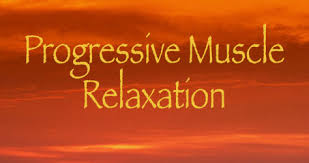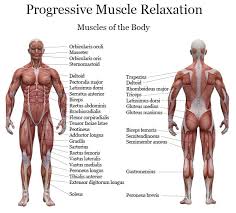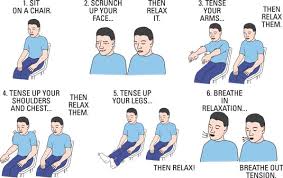PMR THERAPY
PROGRESSIVE MUSCLE RELAXATION THERAPY
Progressive muscle relaxation is a systematic technique for managing stress and achieving a deep state of relaxation. It was developed by Dr. Edmund Jacobson in the 1930s. [citation needed] He discovered that a muscle could be relaxed by first tensing it for a few seconds and then releasing it. [citation needed] Tensing and releasing various muscle groups throughout the body produces a state of relaxation. This article will provide you with detailed instructions on how to use this technique to improve your health and reduce stress.
This technique can be practiced in a structured group so that residents can learn to do it on their own. This technique is useful because it can be done in the resident’s bed or in a chair. It can be used for relaxation and can help those that have difficulty falling asleep at night
Progressive muscle relaxation is a technique that involves tensing specific muscle groups and then relaxing them to create awareness of tension and relaxation. It is termed progressive because it proceeds through all major muscle groups, relaxing them one at a time, and eventually leads to total muscle relaxation.
Instructions:
Step 1. Assume a comfortable position. You may lie down; loosen any tight clothing, close your eyes and be quiet.
Step 2. Assume a passive attitude. Focus on yourself and on achieving relaxation in specific body muscles. Tune out all other thoughts.
Step 3. Tense and relax each muscle group as follows:
- Forehead – Wrinkle your forehead, try to make your eyebrows touch your hairline for five seconds. Relax.
- Eyes and nose – Close your eyes as tightly as you can for five seconds. Relax.
- Lips, cheeks and jaw – Draw the centers of your mouth back and grimace for five seconds. Relax. Feel the warmth and calmness in your face.
- Hands – Extend your arms in front of you. Clench your fists tightly for five seconds. Relax. Feel the warmth and calmness in your hands.
- Forearms – Extend your arms out against an invisible wall and push forward with your hands for five seconds. Relax.
- Upper arms – Bend your elbows. Tense your biceps for five seconds. Relax. Feel the tension leave your arms.
- Shoulders – Shrug your shoulders up to your ears for five seconds. Relax.
- Back – Arch your back off the floor for five seconds. Relax. Feel the anxiety and tension disappearing.
- Stomach – Tighten your stomach muscles for five seconds. Relax.
- Hips and buttocks – Tighten your hip and buttock muscles for five seconds. Relax.
- Thighs – Tighten your thigh muscles by pressing your legs together as tightly as you can for five seconds. Relax.
- Feet – Bend your ankles toward your body as far as you can for five seconds. Relax.
- Toes – Curl your toes as tightly as you can for five seconds. Relax.
Step 4. Focus on any muscles which may still be tense. If any muscle remains tense, tighten and relax that specific muscle three or four times.
Step 5. Fix the feeling of relaxation in your mind. Resolve to repeat the process again.
Remember, people respond differently to various activities. Some feel pleasant or refreshed, and others feel calm and relaxed after an activity like this one. Some people notice little change the first time, but with practice, their control increases – as well as the benefits. If you practice this activity, your relaxation should increase.





